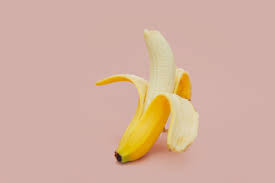
Now for a fiscal banana-with-duct-tape trick?
Is de Chinese crypto ondernemer Justin Sun met de koop van een duct tape banaan van 0,35 dollarcent voor 6,2 miljoen als kunstwerk (NRC 30/11/24) mét echtheidscertificaat een waanzinnig geworden ondernemer, die geen raad weet met zijn geld? Of toch niet en is dit een slimme fiscale truc van deze schatrijke ondernemer? Misschien beide.
Mij is niet bekend of Sun als privé persoon of een van zijn crypto bedrijven het kunstwerk van Maurizio Cattelan heeft gekocht. Als het bedrijf in NL gevestigd zou zijn, dan zou aankoop door het bedrijf niet zomaar door de belastinginspecteur – en hij zal het uit alle macht proberen – tegengehouden kunnen worden. Normaal gesproken zal een waardevol kunstwerk niet in waarde dalen. Een verlies daarop zal bijna nooit voorkomen, laat staan dat deze de winst van het bedrijf drukt. Dat is anders, als bijv. het kunstwerk per ongeluk in brand vliegt en niet is verzekerd. Maar een banaan raakt beschimmeld en verteert onder de ogen van de eigenaar. Het kunstwerk is dan waardeloos geworden (het idee overigens niet zal de inspecteur bepleiten) en daarmee is een verlies van 6.2 miljoen dollar gecreëerd. En als het bedrijf net een verlies in 2024 nodig heeft om onder een winstbedrag te blijven bijv. om een fiscale faciliteit of een lager tarief te krijgen, dan is de banaan een welkom fiscaal hapje geworden. De belastinginspecteur is dan de pisang.
Is the Chinese crypto entrepreneur Justin Sun, with the purchase of a duct tape banana costing 0.35 dollar cents for 6.2 million as a work of art (NRC 11/30/24) with a certificate of authenticity, a crazy entrepreneur who does not know what to do with his money? Or not and is this a clever tax trick by this wealthy entrepreneur? Maybe both.
I do not know whether Sun as a private individual or one of his crypto companies purchased the artwork from Maurizio Cattelan. If the company were located in the Netherlands, the purchase by the company would not simply be stopped by the tax inspector – and he will try with all his might. Normally a valuable work of art will not decrease in value. A loss will almost never occur, let alone depress the company’s profits. This is different if, for example, the work of art accidentally catches fire and is not insured. But a banana becomes moldy and decomposes under the eyes of its owner. The work of art has then become worthless (but the inspector will stress that the idea behind the work of art is still unharmed) and a loss of 6.2 million dollars has been created. And if the company just needs a loss in 2024 to stay below a profit amount, for example to obtain a tax facility or a lower rate, then the banana has become a welcome tax snack. The tax inspector is then the loser.
Ricky Turpijn



